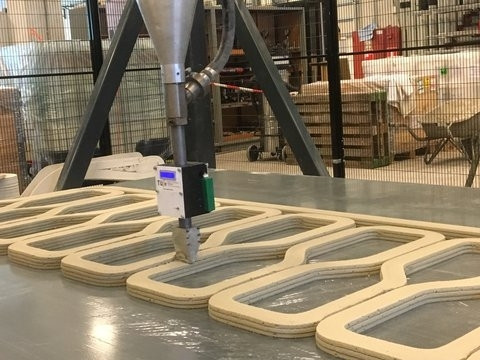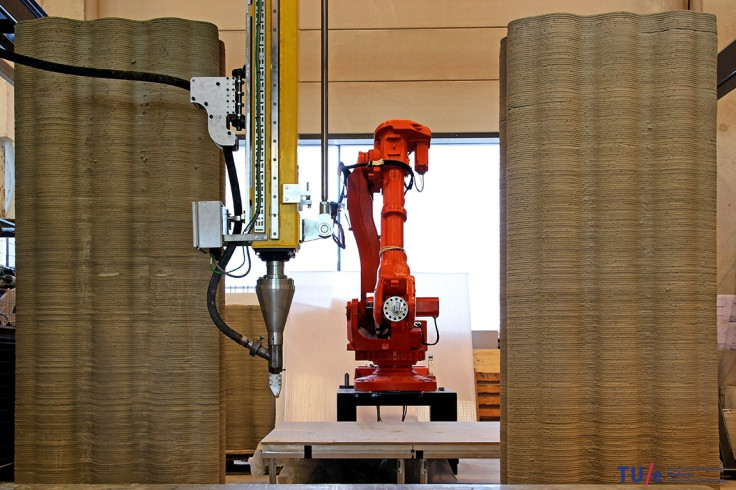Netherlands has just opened the world's first 3D-printed bridge
The bridge has over 800 layers of steel reinforced concrete.

The Netherlands has opened the world's first 3D-printed concrete bridge for use mainly by cyclists.
Researchers from the Eindhoven University of Technology achieved the feat using pre-stressed, reinforced concrete, reports the Guardian. "It was rolled out by a printer, which makes it unique," said Theo Salet from the university.
The 8m-long bridge spans a water-filled ditch in the town of Gemert and connects two roads. It is reportedly strong enough to take the weight of 40 trucks, and was tested for up to two tonnes. The project was implemented in collaboration with BAM Infra Construction Company. According to the company, the printer head added 1 cm of mortar for every layer it printed, while the finished bridge is 3.5 metres wide and almost a metre thick. The whole bridge had six separate "elements" that were printed, each one metre long.

To reinforce the concrete, a flexible steel wire was fed into the pint head. The bridge needed 20 km of steel wire to complete the process. Since the material dried faster than normal concrete, there was also no need for any forming or moulding.
After the elements were printed and fully dry, they were taken to the site and glued together before mounting.
The bridge is reported to use a lot less concrete than traditional bridges would, while not losing out on any of the structural integrity that can be expected from one. The bridge has over 800 layers of material printed out in a pattern that is sturdy, yet not as heavy.
While the Dutch have printed a small bridge out of concrete, in August it was reported that Nasa helped the US Army 3D print whole barracks which can be made shelters and temporary structures in any location needed. Earlier this year, a company in Moscow 3D printed a house out of concrete in just 24 hours.

According to BAM, printing by itself is completely customisable, uses less concrete and because there is no forming and moulding required, there is less waste and the work gets completed fast. The cost of building is also considerably reduced, notes the report.





















